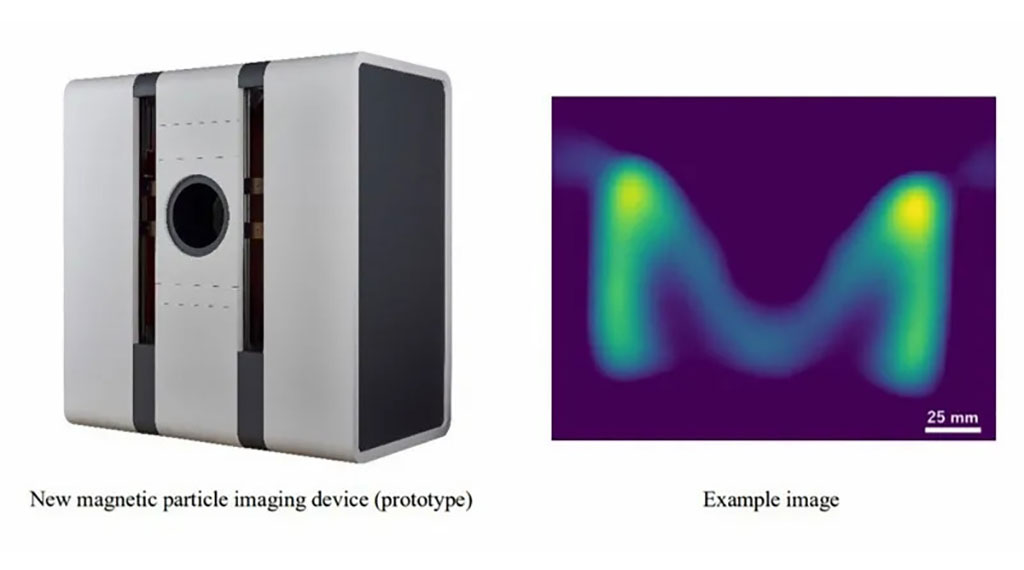Magnetic Particle Imaging Device Identifies Alzheimer's Risk before Symptoms Onset
Posted on 08 Sep 2023
The prevalence of dementia, particularly Alzheimer's disease, continues to rise globally. Medications targeting the accumulation of amyloid-β in the brain, a potential contributor to Alzheimer's, have shown promise in slowing disease progression. Early intervention during periods of low amyloid-β buildup in the brain can delay disease onset. Therefore, there exists a critical need for technology capable of measuring amyloid-β accumulation and distribution. Now, the world's first high-sensitivity imaging device designed to operate at low frequencies with a compact power supply could revolutionize pre-Alzheimer's diagnosis. This device can image magnetic particles that bind to amyloid-β, the causative agent of Alzheimer's, enabling quantitative assessment of amyloid-β accumulation and distribution. The goal is to enable imaging-based predictions of Alzheimer's risk before symptoms manifest in the patient.
A team of scientists at Mitsubishi Electric (Tokyo, Japan), Okayama University (Okayama, Japan) and Osaka University (Suita, Japan) have developed the world's first high-sensitivity imaging device that operates at frequencies of 1 kHz or less, significantly reducing the power supply unit's size. Higher-frequency alternating magnetic fields enhance signal detection sensitivity. Existing compact devices, suitable for small animal testing like mice, typically use frequencies of around 25 kHz. The main challenge in adapting this technology for human use was the bulky power supply unit required to drive a larger coil. The device employs an alternating magnetic field generated by a coil to induce magnetic signals from injected magnetic particles within the body, using these signals to generate a three-dimensional image.

Drawing on their extensive expertise in electromagnetic technology and optimizing coil configurations for generating alternating magnetic fields and signal detection, Mitsubishi Electric devised a method that minimizes unwanted signals (noise) that can interfere with magnetic signal detection. This has enabled the development of a magnetic particle imaging device capable of sensitively capturing magnetic particle images across an area equivalent to the human brain's size. Most importantly, its ability to operate at frequencies below 1 kHz is a pioneering achievement that dramatically reduces the size of the necessary power supply unit. This breakthrough represents a significant leap toward realizing imaging tests capable of assessing the risk of Alzheimer's development before symptoms emerge.
Related Links:
Mitsubishi Electric
Okayama University
Osaka University














